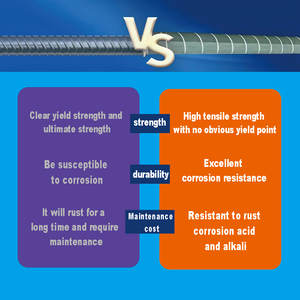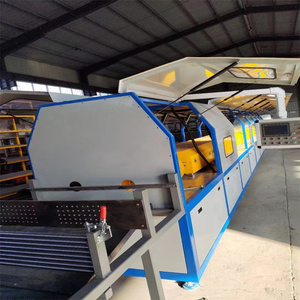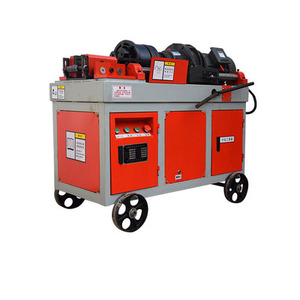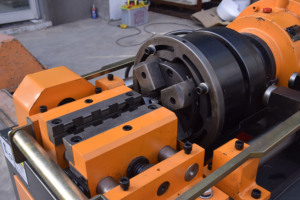
All categories
Featured selections
Trade Assurance
Buyer Central
Help Center
Get the app
Become a supplier

(41727 products available)














































A vital component in the construction business is the material employed, and it significantly impacts the strength, longevity, and adaptability of the concrete reinforcing bars.
Usually, rebar is manufactured of steel, which is selected for its prominent tensile strength and stretchability. Carbon steel grades, including grades 40, 60, and 75, are common because they provide variations in strength suitable for unique construction needs. Advanced hulled rebar uses a coating of fused and jointed epoxy resin to promote corrosion resistance and extend the life span of structures, especially in environments susceptible to moisture and chemical assaults.
Another new development in rebar manufacturing is using stainless steel, which offers unparalleled corrosion resistance; however, it is relatively expensive. For more sustainable solutions, recycled steel is gaining popularity, reducing environmental impact without compromising essential performance characteristics.
Concrete strongly bonds to fiberglass rebar, which is lighter and non-corrosive, making it a valid option for underwater or coastal constructions, where corrosion is a vital concern. Each rebar material brings distinct benefits, which helps construction professionals choose appropriate materials for their project needs.
Choosing the right rebar for construction projects requires carefully looking at strength, stretchability, and corrosion resistance. The rebar grade is a crucial consideration: lower numbers refer to lower strength and are more flexible.
Even so, high-strength concrete structures demand higher grades, such as 60 or 75. Corrosion resistance must also be factored in, especially for structures exposed to tough weather conditions, where epoxy-coated or stainless steel bar can be useful.
Reinforcing bars come in varying diameters, commonly between 10mm and 40mm, and proper diameter selection is critical for load-bearing ability and anchorage. Besides, conformance to international standards, such as ASTM or ISO, guarantees that the chosen rebar meets industry requirements.
It is also noteworthy that recycled steel rebar offers a sustainable substitute without dropping performance. A thorough understanding of the project's needs and rebar composition will provide long-lasting and cost-effective solutions.
A crucial part in concrete construction is the use of rebar, which provides additional tensile strength to oppose cracking and structural weakening. Common uses consist of reinforcing structures like beams, columns, and slabs that demand more strength to manage gravitational and lateral loads.
Also, rebar is used in highway concrete mats and pavements to help road surfaces endure heavy traffic strain and climatic variables, extending durability and reducing maintenance needs. Besides, it is essential for forming a network of interconnected rods in cinder block walls, improving stability and aligning with the expected safety standards.
Moreover, in fence concrete bases, rebar adds to the fence's structural integrity, ensuring longevity and misalignment resistance. Its versatile applications help in the development of safe and durable structures for accommodating living and operational needs effectively.
The direct purchase of rebar from a mill or manufacturer is the most transparent way to source it for large projects. Building lasting contracts with suppliers guarantees steady rebar supplies at negotiated prices. Buying through bulk channels, such as distributors or purchasing cooperatives, can lead to tremendous cost savings.
Using the local market knowledge of available options, such as prevailing prices and available quality tiers, is very helpful in the negotiation process. One may consider alternative materials, like galvanized or fiber-reinforced rebar, which may provide cost benefits without dropping performance.
Moreover, periodically evaluating market conditions and rebar prices will enable time purchasing and possible significant savings. Also, forming strategic partnerships with reliable suppliers will enhance the flow of materials and ensure fulfillment capabilities in an urgent demand.
The metal rebar industry has undergone substantial modernization in production methods and material choice in the past decade. Due to rising energy prices and the global emphasis on sustainability, the use of recycled steel in rebar production has grown superiorly. Recycled steel provides cost advantages and reduces the detrimental impact of metal manufacturing on the environment.
Moreover, technological developments such as superior thermally-activated rebar have improved corrosion resistance and bonding properties with concrete. Such types of rebar are particularly useful in construction projects for bridges, highways, and coastal facilities.
The industry is shifting toward more innovative materials beyond traditional steel, such as fiberglass and carbon fiber rebar, which are stronger but much lighter and corrosion-resistant. These advancements have been propelled by the appeal of such materials in high-performance construction projects. Lastly, the rebar tying and placement processes are being improved significantly due to automation and mechanization integration, enhancing efficiency and minimizing labor demands in the construction projects.
Even though rebar seeks to offer stability within structures, it needs some careful handling and maintenance be upheld to maximize its benefits. First and foremost, when purchasing rebar, always ensure the proper inspection is made for signs of rust or corrosion. Reddish discoloration indicates that the rebar has possibly corroded, diminishing its tensile strength. The rebar should be kept in a dry, enclosed space to prevent moisture exposure, which is a significant contributor to corrosion.
Concrete consolidation around the rebar is important to offer an appropriate protective layer that inhibits environmental elements from affecting the rebar. Periodically, structures such as bridges or exposed buildings should be inspected for cracks within the concrete, as this indicates that there might be corrosion on the rebar.
Inclusion of corrosion-resistant rebar, like epoxy-coated or stainless steel, is necessary in environments sensitive to moistened or chemically-degradable elements. When concrete is placed, measures must be taken to ensure proper a concrete cover over the rebar to promote resistance against corrosion. Not only does this act reduce environmental effects on the rebar but also increases its maintenance lifespan.
One of the biggest advantages of rebar concrete cracking is that it contributes to the sustainability of the structure. It gives extra tensile strength to concrete, enabling the structure to remain stable and not open up cracks when under high loads or subjected to climatic changes. Hence, this leads to the constructed building, bridge, or other types of infrastructures having greater durability, so they can take the weight and stresses associated with everyday use over time.
Another important factor is the cost-effectiveness of rebar. Rebar provides much-needed reinforcement at a comparatively low cost when compared to other reinforcing options, such as fiber composite. Additionally, rebar is manufactured from different steel grades, making it flexible to fulfill distinct engineering requirements for varying construction applications, such as residential houses or skyscrapers.
Rebar is widely used and backed by several governing bodies, so it is easy to find and standardized, increasing its safety and performance. Beyond this, rebar can be morphed easily into various shapes and sizes, making it possible to accommodate complex and innovative architectural designs. This flexibility in shapes results in a new and appealing outlook for the structures.
A1: Reinforcing bar, or simply rebar, is mostly made of carbon steel with a distinctive surface that allows better mechanical interlocking with the concrete.
A2: Even though most rebar is steel, an advanced composite material also exists, which is non-metallic.
A3: Fiberglass rebars are more expensive than steel rebar because they are not readily or easily accessible, although they have superior rust resistance.
A4: Not any rebar is rustproof, but rebar acts as a sacrificial anode to provide cathodic protection to other steel elements.